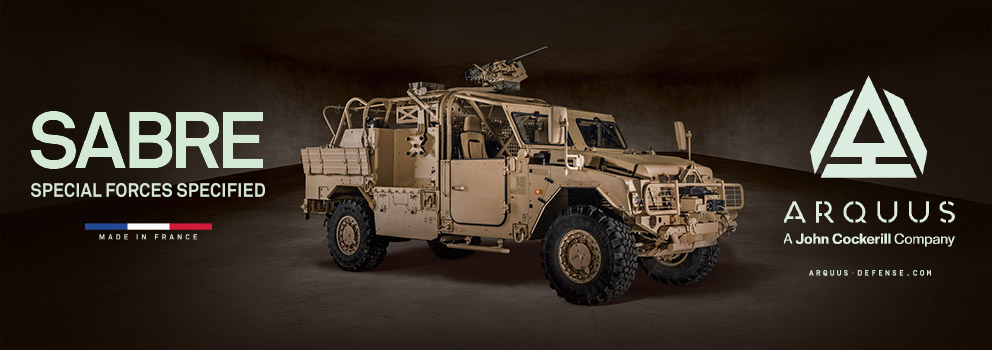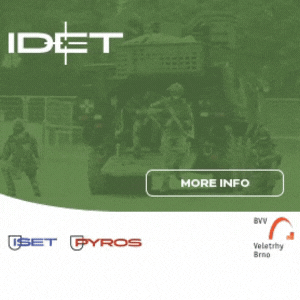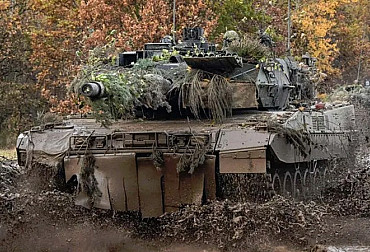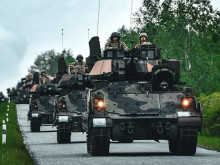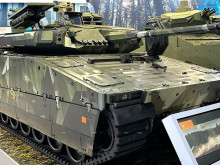Use of 3D printing in the military: Everything we need, we also print
3D printing is indeed gradually approaching this goal, as an additive process by laying down continuous layers of material to create parts, components and various objects. I have already discussed additive manufacturing (AM) and 3D printing earlier in the article "Additive manufacturing within reach for the Czech Armed Forces". Now let's take a look at what has happened since then.
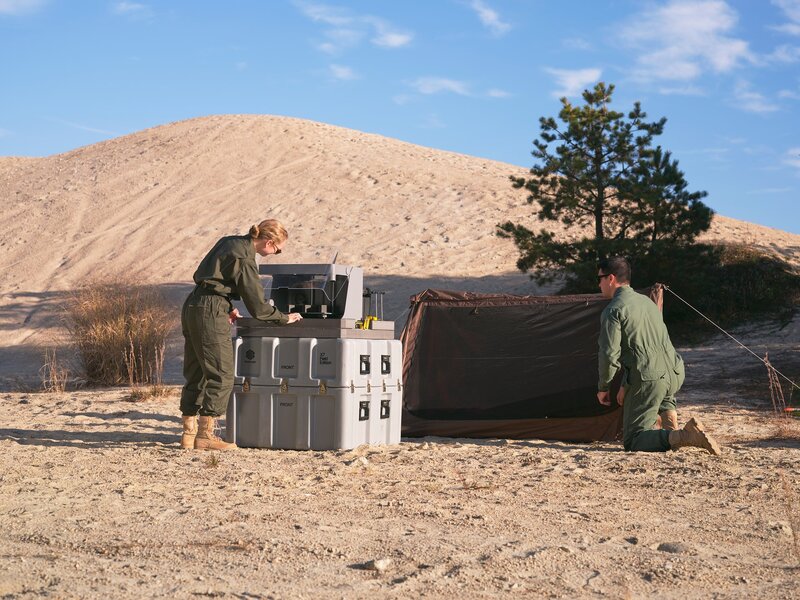
AM Village 2024
The workshop (WS) "The Additive Manufacturing Village 2024" took place in Tournai, Belgium, from 13 to 17 May 2024. Participation in this WS provided an opportunity to learn about the opportunities and requirements in the field of 3D printing for use in the armed forces. The course of the WS included technical seminars, briefings and hands-on 3D printing demonstrations. Different 3D printing methods and the possibilities of their optimal use were presented in detail. The representative of the European Defence Agency (EDA) emphasised the importance of mutual cooperation in this area, especially on digitisation and the creation of a systematic database in the field of spare parts production and repair of AM technologies, including deepening cooperation with industry representatives. In addition to the practical application of AM innovations, issues to ensure technical interoperability were discussed, including the development and adherence to NATO/EU standards.
The Belgian Minister of Defence then visited the event on 14 May 2024, and in her speech she emphasised the importance and potential of AM and expressed her support for the use of this technology in the armed forces, particularly as a tool to reduce the logistics burden. She then took note of the individual positions of the industry and military representatives and NATO/EU institutions present.
The main objective of the WS was to identify the military use of 3D printing in exercises, missions or combat deployments of troops; to identify the possibilities of AM in logistics support; to verify the capabilities of industry in the use of new AM techniques, the creation of practical applications, the exchange of experiences ("Best Practice"); and to define the trends in the development of this technology. In turn, invited representatives of the defence industry were able to learn about the requirements for military applications of AM and the current challenges for practical use.
Battle Damage Repair
One of the important areas of logistics support is the so-called "Battle Damage Repair" (BDR), i.e. the repair of battle damage to equipment, often also at or near the front line, where the chosen solutions are strongly influenced by the timeframe and other conditions resulting from the evolution of the combat situation.
Lessons learned from the conflict in Ukraine
The lessons learned from the Ukrainian battlefield to date are as follows:
- Much of the need for spare parts relates to Soviet-built military equipment; the requirement for the production of missing spare parts or repair of this equipment using AM is growing all the more.
- The share of AM in the repair of combat equipment is several times higher compared to traditional methods.
- Destruction/vulnerability of stationary workshop assets (containers) close to first-line units, especially within range of adversary drones and artillery, confirms the importance of mobile solutions, but also of camouflage (portable solutions - secure locations).
Data transmission and protection
Another important area related to AM and repair security is the secure transmission of data, which can be achieved by encryption and the use of secure devices in accordance with the requirements for handling classified information. Adversary exploitation of acquired data may lead to the exposure of weaknesses in their own technology. Indeed, in many cases, repairs will be carried out in cooperation with suppliers who, on request, will send the relevant data to carry out repairs and print the necessary spare parts. In this way, delays associated with the transport of spare parts will be minimised, not to mention the financial savings and the rapid resolution of the non-failure of the damaged equipment, which is the most important thing in the situation. At the same time, it will be assessed whether the spare part will also be used for temporary (emergency) use or for a full-fledged repair according to the relevant certifications and standards, the development of which within NATO and the EU is still lagging behind. In particular, until the relevant standards are in place, an important part of the production process will be the rigorous verification of the quality (strength, flexibility, defect detection) and functionality of spare parts through testing and the acquisition and exchange of experience.
The growing potential of AM
The potential of AM to develop logistics support capabilities is gradually being realised. This is primarily the production of spare parts, but also the repair of damaged equipment (patching of punctures or replacement of missing parts). The use of AM can thus reduce the overall burden on the logistic support of the armed forces.
AM is experiencing a dynamic development, with an increasing number of usable 3D printing methods and related types and configurations of 3D printers. The use of new materials suitable for 3D printing, or the development of 3D scanners that allow the creation of 3D models, according to which 3D printing of the target product is performed using software, also contributes to the wider, better and cheaper use of AM.
In the WS, it was shown, using the example of the production of a ballistic vest made of polymer with the required ergonomics, how a ballistic vest can be made to the exact body proportions of the user by scanning body shapes. If the composition of the starting material is not known, different methods and instruments are used to determine its properties (e.g. density, structure). The most common are the use of X-rays (CT scanner), hardness or spark tests, etc. Post-processing (roughening, smoothing, etc.) is also used to ensure the desired quality of AM products. It is also true for 3D printing that the more pieces produced, the lower the costs (preparation - pads, supports + ceramic layer, use of a wash bath for cleaning, sintering - baking in a furnace, etc.).
In general, for lower cost 3D printing applications, different types of polymers are used according to their property requirements. For example, in the context of maximum temperature resistance, we can use a polymer that can withstand temperatures up to 250 °C. 3D printing from metallic materials is also seeing significant development. The most commonly used materials are steel, titanium, tin, nickel and aluminium. The essence of 3D printing is the gradual deposition of layers of filament (the filler for the 3D printer in the form of wire or metal powder). The heat-treated material can then be applied using a nozzle head or multiple nozzles. Multiple nozzles can also be used to print several layers of different materials at once to create a composite structure with the desired properties, which is one of the anticipated trends in the further development of 3D printing.
The development of digitalisation and other technologies, among which artificial intelligence (AI) is a major contributor to the use of AM. The use of AI within AM enables rapid response to combat experiences and is characterised by the flexibility of the chosen 3D printing solutions, including the use of new materials and appropriate software tools.
Examples of 3D printer suppliers
During the WS, a number of suppliers from different countries presented their 3D printers. For example, the 3D printer from the Spanish company MELTIO uses 6 lasers to optimally melt the filament and adhere the layers, thus creating fusion points from different sides.
The Australian company TITOMIC uses cold spray technology for 3D printing, which uses a fusion kinetic process for plating or repairing parts. When using aluminium, a pressure of 6 bar is applied, while higher pressures are applied when using titanium, for example.
During the practical demonstrations of 3D printing, there was also an opportunity to get acquainted with Czech 3D printers from Prusa Research a.s. It occupies an important place in the world production of home printers and its range is constantly expanding. Original Prusa printers are already used by most of the armies of NATO countries. The company's representative Jiří Průša said the following about 3D printing and Prusa Research a.s. products:
- Original Prusa 3D printers are used by the defence forces for the production of prototypes and selected spare parts. Experience from Ukraine shows that 3D printing has an irreplaceable place in the production of drones and related components today, when it is necessary to respond to changing conditions on the battlefield and the actions of the enemy.
- Existing users from the military side of our printers appreciate the ability to operate fully in offline mode, as well as the absence of a camera, which in some competing products transmits data from the printer and stores it in the cloud outside NATO countries.
- The further expansion of 3D printing within the military would certainly benefit from consideration of AM already in the acquisition process, which would include, for example, a requirement to supply part of the parts in the form of a 3D model, including the associated intellectual property.
Other products using 3D printing included various silicone and polymer seals, as well as orthoses and other prosthetic devices.
Production of explosion-proof barriers
A practical demonstration by the French company Constructions-3D, which demonstrated the use of 3D printing to produce concrete elements, namely an object suitable for the establishment of a control or observation post and several explosion-proof barriers of the required profile.
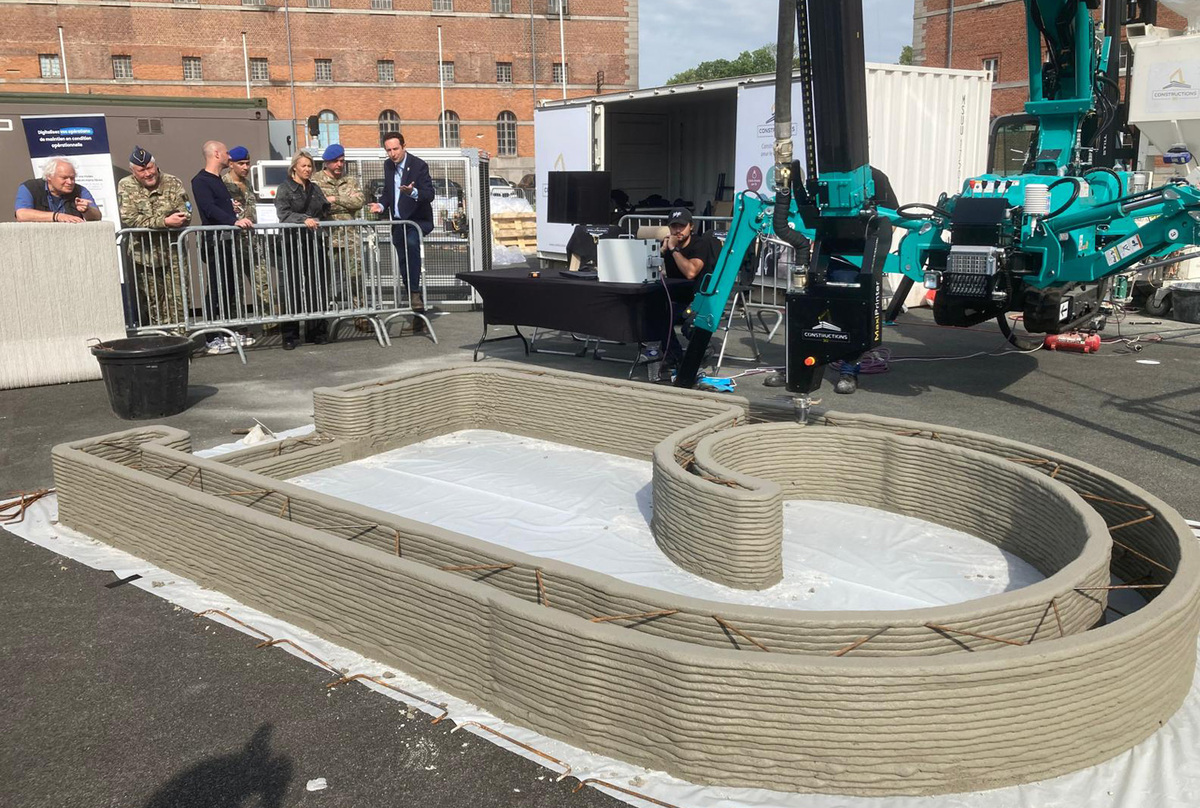
The sample barriers were internally reinforced with metal elements. The interior of these barriers can be filled in on site with various materials (stones, sand, etc.). However, in the case of such profiles, an explosive charge (e.g. remote-controlled) can also be installed inside the barrier.
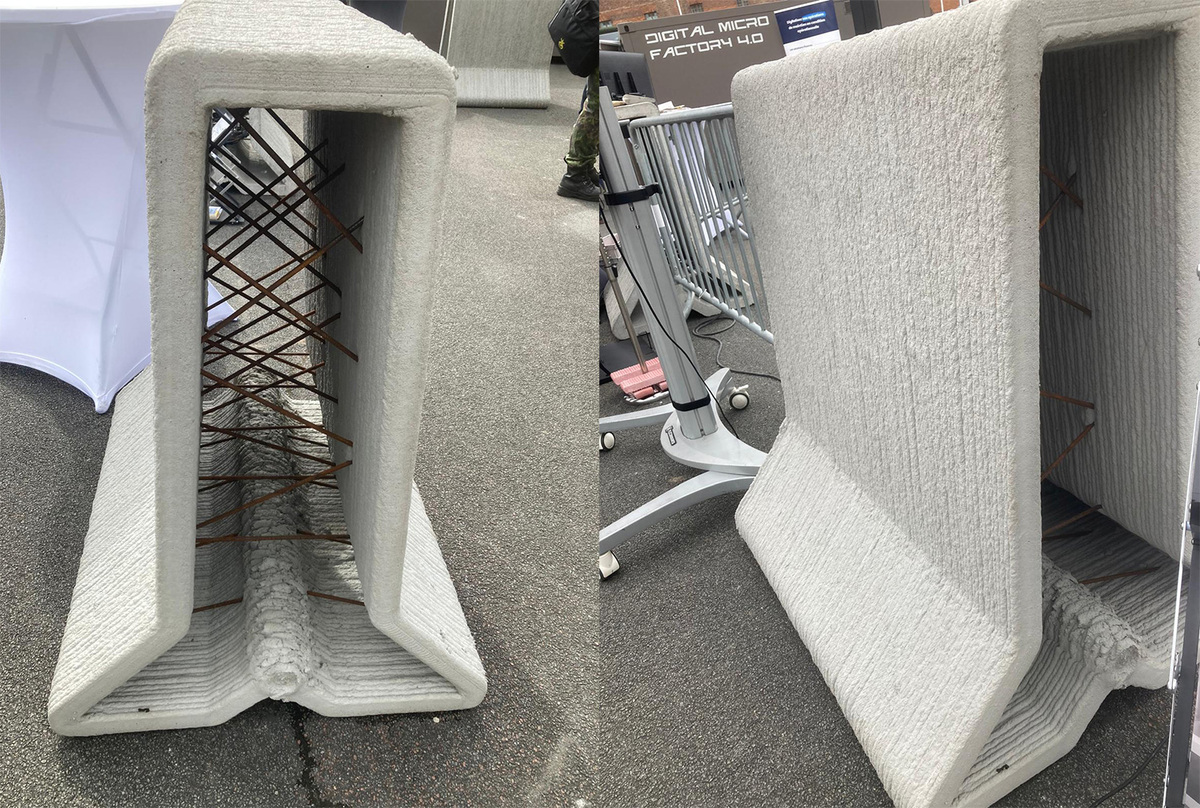
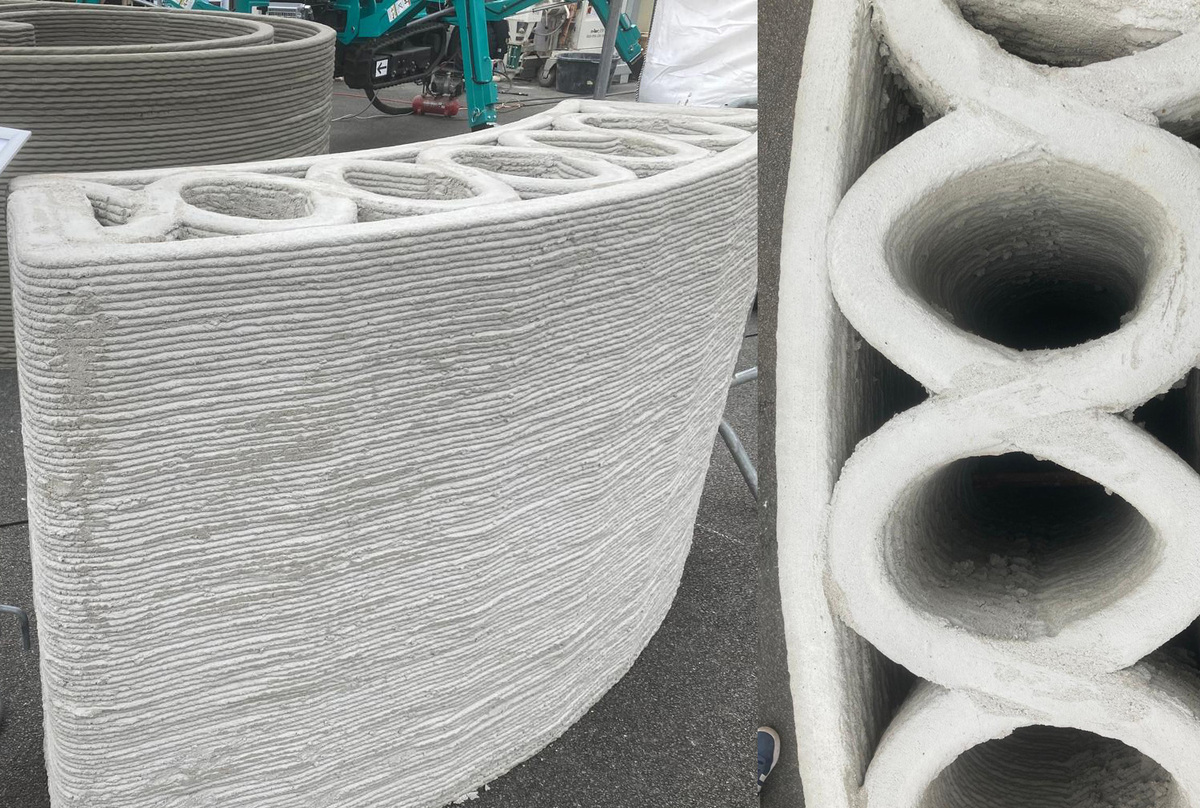
Reverse engineering
Attention was also paid to reverse engineering, including the risks of copying by competitors or potential hostile entities. The first steps of reverse engineering include scanning and creating a 3D model. Again, information on patent law and other copy protection legislation was provided.
Inspiration for the acquisition process
AM is gradually becoming a challenge for the acquisition process as well. The time is already coming when 3D printing of spare parts will need to be addressed in the context of contracts between the Ministry of Defence and military suppliers. This is not just about spare parts for new equipment, but also for older equipment for which spare parts are no longer produced. Indeed, the discontinuation of original parts often occurs even after ten years after the production of the equipment has been discontinued or the design (size, shape) or material used has changed.
It is obvious that one of the prerequisites for the use of AM in the armed forces, and therefore also in the Czech Armed Forces, will be good cooperation with the defence industry. This is also necessary in the development of standards, modifications of legislation or concluded contracts in order to minimise the risks of incorrect use of AM, including, for example, compliance with warranty conditions by suppliers.
Challenges for the armed forces
An important area for the use of 3D printing is the training of specialist personnel. In this regard, a Bundeswehr officer stated that soldiers are often rotating and therefore prefer civilian staff in this area, who show greater stability. It is the quick training, together with the offer of e-learning courses and the possibility of easy maintenance, that is one of the reasons why printers from the Czech manufacturer Prusa Research are popular with the armed forces.
The development of common standards will also be an essential prerequisite for the introduction of AM into the armed forces of NATO/EU countries. Adaptation of existing ISO, ASTM and national standards could help.
Conclusion
In the context of increasing requirements for the mobility of military equipment, there are also increasing requirements for flexible and rapid repair and spare parts provision. In this respect, AM provides a number of rational and promising solutions to quickly restore the combat capability or operability of military equipment.
